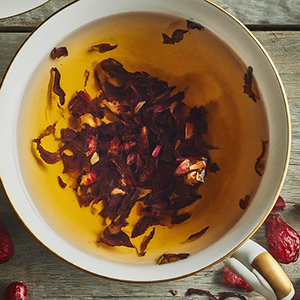In spring, the young buds of the burnet plant are used in salad dishes because of their tasty, refreshing flavor. Like greater burnet, this plant was not known by great physicians and botanists of ancient times. Its use spread over Europe with the Renaissance.

Burnet Plant Scientific Facts
- Scientific Synonym – Poterium sanguisorba L.
- Scientific Name – Sanguisorba minor Scop.
- Other Names – Small burnet, salad burnet.
- French – Petite pimpernelle.
- Spanish – Pimpinela menor.
- Environment – Slopes, bushes, and unfarmed lands all over Central and Southern Europe, but not in Northern Europe. It also grows in North America.
- Description – The plant of the Rosaceae family grows from 0.2 to 1 m high, with reddish stems and small, terminal, greenish flowers.
- Parts of the plant used medicinally – The whole plant, including its root.
Healing Properties

The whole plant contains significant amounts of tannin, an essential oil, and vitamin C. Its properties are as follows:

- Astringent and hemostatic—Due to its high tannin content, it dries and clots the mucosa and the skin. Good results have been achieved in treating acute gastritis and gastroenteritis, even when there is rectal bleeding (dysentery) and in the case of mucous-membrane enterocolitis (a severe form of diarrhea) in children on a milk diet.
- Carminative and digestive – Its essential oil reduces the amount of gas in the intestine and promotes digestion.
- Diuretic – With mild and well-tolerated effects.
- Cicatrizant – The burnet plant is externally used to heal skin wounds and ulceration.
How to use Burnet
- Raw young buds in salads and other meals.
- Decoction with 50 to 100 grams of root per liter of water, boiling for 15 minutes. Aerial parts of the plant can also be added to this decoction. Drink four or more cups daily.
- Lotions with the aforementioned decoction.
- Compresses soaked in the decoction internally used.
DISCLAIMER: All content on this website is presented solely for educational and informational objectives. Do not rely on the information provided as a replacement for advice, diagnosis, or treatment from a qualified medical expert. If you are pregnant, nursing, or have any preexisting medical concerns, talk to your doctor before using any herbal or natural medicines.
REFERENCES
- George D. Pamplona-Roger, M.D. “Encyclopedia of Medicinal Plants.” George D. Pamplona-Roger, M.D. Encyclopedia of Medicinal Plants. Ed. Francesc X. Gelabert. vols. 2 San Fernando de Henares: Editorial Safeliz, 2000. 533. Print. [burnet plant]
- Plants For A Future (PFAF): https://pfaf.org/user/Plant.aspx?LatinName=Sanguisorba+minor
